-
 bitcoin
bitcoin $122659.385674 USD
0.52% -
 ethereum
ethereum $4484.113342 USD
-0.09% -
 bnb
bnb $1304.229256 USD
-0.85% -
 tether
tether $1.000204 USD
-0.03% -
 xrp
xrp $2.860636 USD
-0.51% -
 solana
solana $227.288799 USD
2.36% -
 usd-coin
usd-coin $0.999805 USD
0.01% -
 dogecoin
dogecoin $0.252837 USD
1.18% -
 tron
tron $0.341149 USD
1.12% -
 cardano
cardano $0.830507 USD
0.33% -
 hyperliquid
hyperliquid $45.792319 USD
0.04% -
 chainlink
chainlink $22.422164 USD
1.55% -
 ethena-usde
ethena-usde $1.000283 USD
0.01% -
 sui
sui $3.511389 USD
0.83% -
 stellar
stellar $0.385276 USD
-0.44%
What is the role of Solana in the crypto space?
Solana’s high-speed blockchain, powered by Proof of History and low-cost transactions, supports rapid dApp development and scales efficiently amid growing ecosystem adoption.
Sep 14, 2025 at 11:00 am
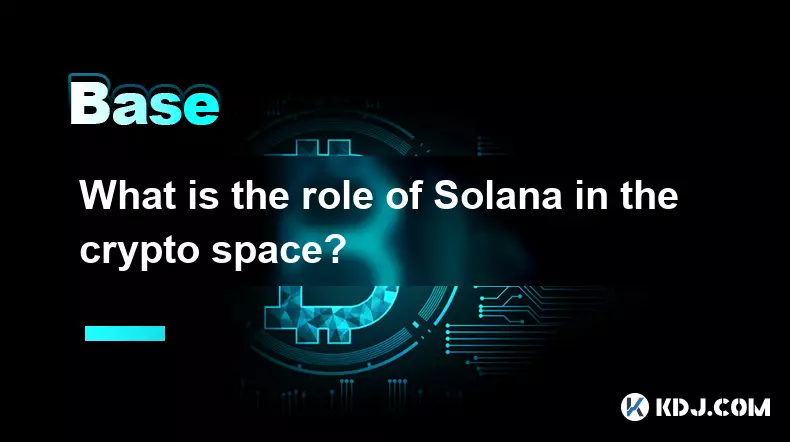
High-Speed Blockchain Infrastructure
1. Solana operates as a high-performance blockchain designed to support fast and low-cost transactions. Its architecture enables thousands of transactions per second, making it suitable for applications requiring rapid settlement times. This speed is achieved through a combination of innovative consensus mechanisms and data processing techniques.
2. The network utilizes a unique method called Proof of History (PoH), which functions as a cryptographic clock. This allows nodes to agree on the order of transactions without waiting for each block to be confirmed, significantly reducing latency.
3. By integrating PoH with a traditional Proof of Stake (PoS) system, Solana maintains both security and scalability. Validators stake tokens to participate in consensus, ensuring decentralization while benefiting from streamlined verification processes.
4. Developers building decentralized applications (dApps) find Solana attractive due to its ability to handle large volumes of activity without congestion. This makes it a strong competitor to Ethereum, especially during periods of network overload on other platforms.
Ecosystem Growth and Developer Adoption
1. The Solana ecosystem has seen rapid expansion, with hundreds of projects launching across various sectors including decentralized finance (DeFi), non-fungible tokens (NFTs), and Web3 infrastructure. This growth is fueled by developer incentives, grants, and a supportive community.
2. Several major DeFi protocols have migrated or launched native versions on Solana, drawn by lower transaction fees and faster execution. Platforms such as Raydium, Orca, and Serum provide liquidity and trading capabilities that rival those on more established chains.
3. NFT marketplaces like Magic Eden and Tensor have gained prominence on Solana, offering creators an affordable and efficient environment to mint and trade digital assets. The low cost of minting has led to widespread experimentation and innovation in digital art and collectibles.
4. Infrastructure projects such as wallets (Phantom, Backpack), bridges, and indexing tools have matured alongside the ecosystem, improving user experience and accessibility for both retail and institutional participants.
Competitive Positioning in the Crypto Market
1. Solana differentiates itself by addressing two major pain points in blockchain technology: scalability and cost. While many blockchains struggle with high fees and slow confirmations during peak usage, Solana maintains consistent performance.
2. Its ability to process transactions at scale without sacrificing decentralization goals positions it as a viable alternative to first-generation smart contract platforms. Institutional interest has grown as enterprises explore blockchain solutions that can handle real-world throughput demands.
Solana’s resilience after past network outages has demonstrated improvements in stability and operational maturity, reinforcing confidence among users and investors.3. The blockchain has attracted partnerships with traditional finance entities and tech companies exploring tokenization of assets, event ticketing, and identity systems. These use cases highlight its potential beyond speculative trading.
4. With a strong focus on developer tools and documentation, Solana lowers the barrier to entry for new builders. SDKs, APIs, and testnet environments are readily available, encouraging rapid prototyping and deployment.
Frequently Asked Questions
What makes Solana faster than other blockchains?Solana’s speed comes from its Proof of History mechanism, which timestamps transactions before they are added to the blockchain. This pre-ordering reduces communication overhead between nodes, enabling higher throughput compared to blockchains relying solely on traditional consensus models.
Is Solana truly decentralized?Solana has faced criticism regarding its level of decentralization due to the high hardware requirements for running validator nodes. However, ongoing efforts aim to increase node distribution and reduce centralization risks through incentive programs and client diversity.
How does Solana handle network congestion?Instead of relying on fee markets like Ethereum, Solana uses a predictable fee structure based on minimal computational costs. During high demand, the network prioritizes transactions using quality-of-service metrics rather than bidding wars, maintaining usability under load.
Can Solana support complex smart contracts?Yes, Solana supports Turing-incomplete but highly optimized smart contracts written in Rust and C. While this requires more technical expertise than Ethereum’s Solidity, it allows for greater efficiency and performance in execution.
Disclaimer:info@kdj.com
The information provided is not trading advice. kdj.com does not assume any responsibility for any investments made based on the information provided in this article. Cryptocurrencies are highly volatile and it is highly recommended that you invest with caution after thorough research!
If you believe that the content used on this website infringes your copyright, please contact us immediately (info@kdj.com) and we will delete it promptly.
- BlockDAG, DOGE, HYPE Sponsorship: Crypto Trends Shaping 2025
- 2025-10-01 00:25:13
- Deutsche Börse and Circle: A StableCoin Adoption Powerhouse in Europe
- 2025-10-01 00:25:13
- BlockDAG's Presale Buzz: Is It the Crypto to Watch in October 2025?
- 2025-10-01 00:30:13
- Bitcoin, Crypto, and IQ: When Genius Meets Digital Gold?
- 2025-10-01 00:30:13
- Stablecoins, American Innovation, and Wallet Tokens: The Next Frontier
- 2025-10-01 00:35:12
- NBU, Coins, and Crypto in Ukraine: A New Yorker's Take
- 2025-10-01 00:45:14
Related knowledge

How does cryptocurrency achieve decentralization?
Sep 30,2025 at 04:37am
Understanding the Foundation of Decentralization in Cryptocurrency1. Cryptocurrency achieves decentralization primarily through the use of blockchain ...
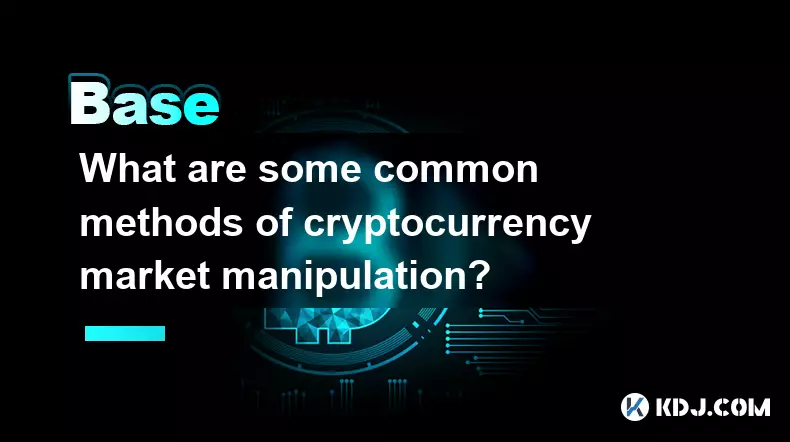
What are some common methods of cryptocurrency market manipulation?
Sep 27,2025 at 02:55am
Wash Trading and Its Impact on Market Perception1. Wash trading involves an individual or entity simultaneously buying and selling the same cryptocurr...
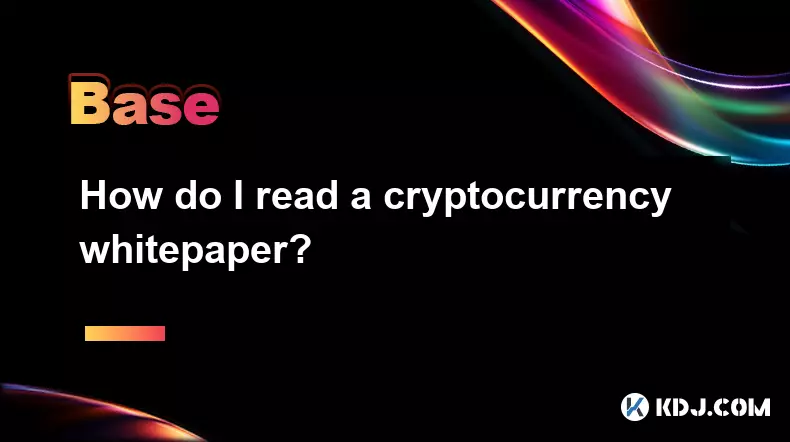
How do I read a cryptocurrency whitepaper?
Sep 27,2025 at 05:54am
Understanding the Structure of a Cryptocurrency Whitepaper1. Begin by identifying the executive summary, which outlines the project’s core vision and ...
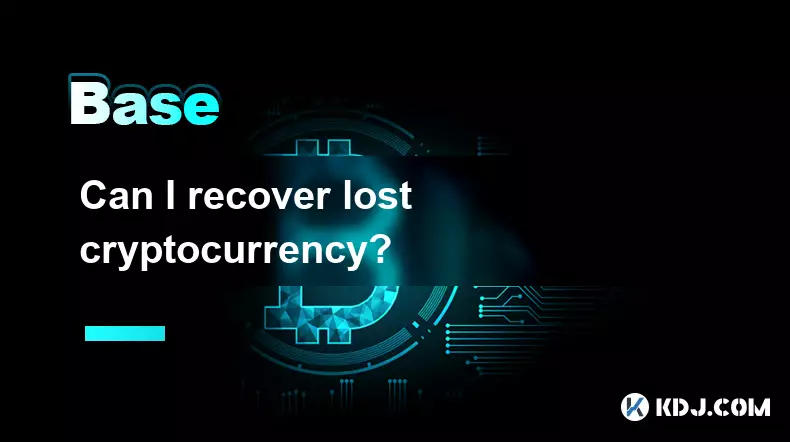
Can I recover lost cryptocurrency?
Sep 25,2025 at 08:18am
Understanding the Nature of Cryptocurrency Loss1. Cryptocurrency operates on decentralized networks, meaning there is no central authority to reverse ...
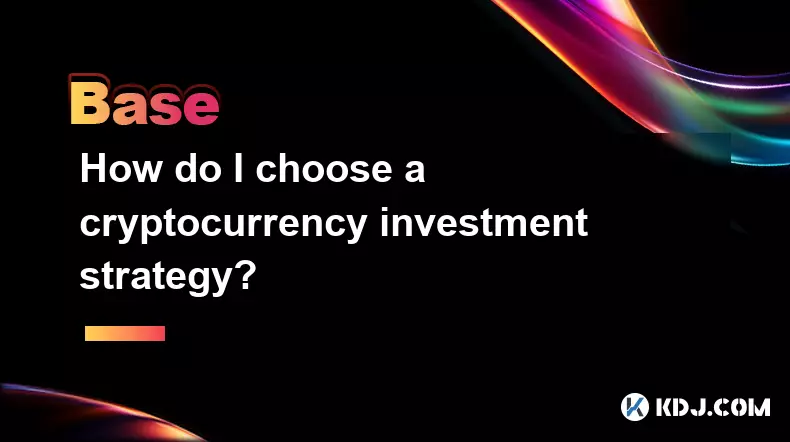
How do I choose a cryptocurrency investment strategy?
Sep 27,2025 at 03:55pm
Understanding Risk Tolerance in Crypto Investing1. Assessing personal risk tolerance is a foundational step when entering the cryptocurrency market. V...
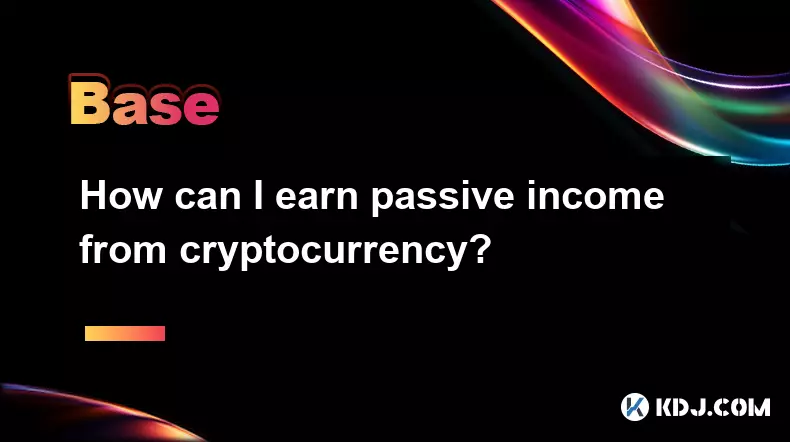
How can I earn passive income from cryptocurrency?
Sep 23,2025 at 10:18am
Staking Cryptocurrencies for Regular Returns1. Many blockchain networks operate on a proof-of-stake (PoS) consensus mechanism, allowing users to earn ...

How does cryptocurrency achieve decentralization?
Sep 30,2025 at 04:37am
Understanding the Foundation of Decentralization in Cryptocurrency1. Cryptocurrency achieves decentralization primarily through the use of blockchain ...

What are some common methods of cryptocurrency market manipulation?
Sep 27,2025 at 02:55am
Wash Trading and Its Impact on Market Perception1. Wash trading involves an individual or entity simultaneously buying and selling the same cryptocurr...

How do I read a cryptocurrency whitepaper?
Sep 27,2025 at 05:54am
Understanding the Structure of a Cryptocurrency Whitepaper1. Begin by identifying the executive summary, which outlines the project’s core vision and ...

Can I recover lost cryptocurrency?
Sep 25,2025 at 08:18am
Understanding the Nature of Cryptocurrency Loss1. Cryptocurrency operates on decentralized networks, meaning there is no central authority to reverse ...

How do I choose a cryptocurrency investment strategy?
Sep 27,2025 at 03:55pm
Understanding Risk Tolerance in Crypto Investing1. Assessing personal risk tolerance is a foundational step when entering the cryptocurrency market. V...

How can I earn passive income from cryptocurrency?
Sep 23,2025 at 10:18am
Staking Cryptocurrencies for Regular Returns1. Many blockchain networks operate on a proof-of-stake (PoS) consensus mechanism, allowing users to earn ...
See all articles










































































